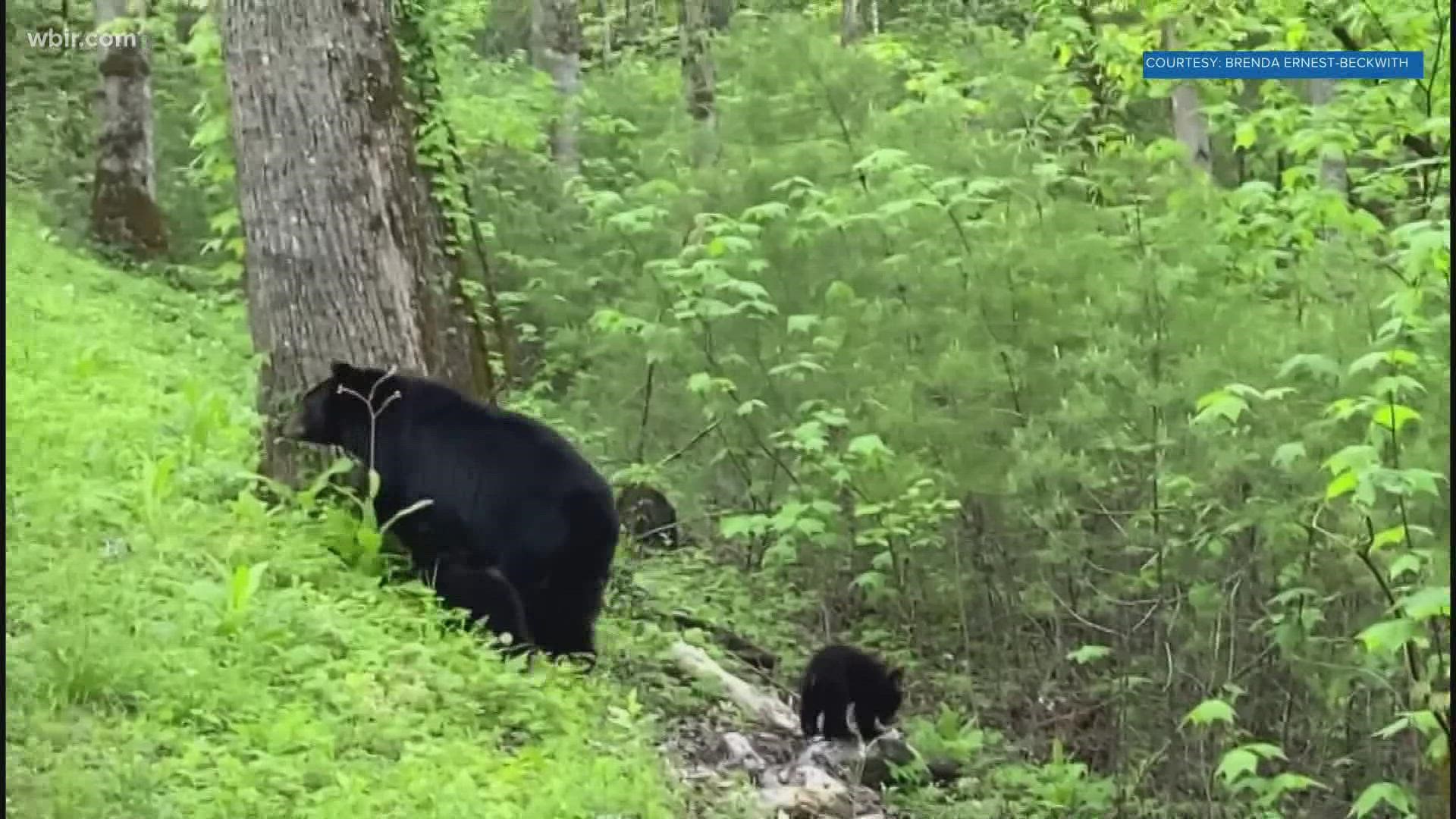Great Smoky Mountains Natl. Park — UPDATE THURSDAY: Great Smoky Mountains National Park has reopened two popular trails to walkers and hikers following a decrease in bear activity.
The popular Gatlinburg Trail between Gatlinburg and the Sugarlands Visitor Center is once again accessible to visitors. So is Twin Creeks Trail between Gatlinburg and the Twin Creeks Science and Education Center.
National Park Service personnel closed them last month because of a large number of bears feeding on mast.
The park cautions that visitors using all trails should still watch out for bears or bear activity.
And as always, do not engage with a bear and do not try to get close to them. Leave them alone and give them space.
PREVIOUS STORY: The Great Smoky Mountains National Park announced Wednesday some trails were closed due to a large concentration of black bears feeding on acorns in the area. They said the trails would stay closed until further notice for visitor safety, and to let the bears feed undisturbed on natural food.
The affected trails are listed below.
- Gatlinburg Trail, between Gatlinburg and the Sugarlands Visitor Center
- Twin Creeks Trail, between Gatlinburg and the Twin Creeks Science and Education Center
The park said that bears depend on fall foods like acorns and grapes to store fat, allowing them to survive in the winter when less food is available. Some bears travel more than 30 miles to feed in a particular stand of oak trees, they said.
They are usually solitary creatures, but many can be seen in close proximity during the fall. They will often feed for more than 12 hours per day and can be concentrated in areas where food sources can be easily found.
The bears are usually warier during this time and can act aggressively to defend the areas, according to a press release from GSMNP.
Anyone who encounters a black bear during this time should stay watchful and make sure not to approach. If the bear is far away and just feeding or walking by, then notices you but continues its action, no further action is needed. In this situation, people should proceed while keeping a watchful eye on the bear.
But if the bear stops feeding, changes its direction of travel, or watches you — you may be too close. People should back away slowly if it starts behaving aggressively, giving it more space.
And if the bear follows you without behaving aggressively, you should stand your ground. Shout at it or talk loudly, and groups should act together to make themselves look as large as possible.
People can also start using bear spray if the bear gets closer than 20 yards. Make sure not to run and not to turn away from the bear in this situation.

